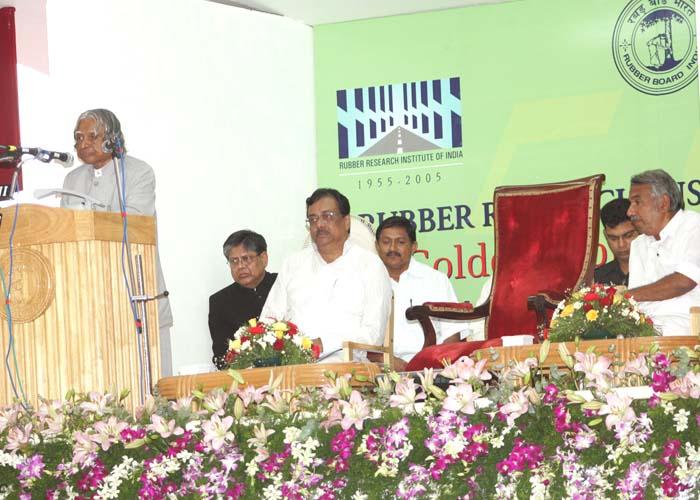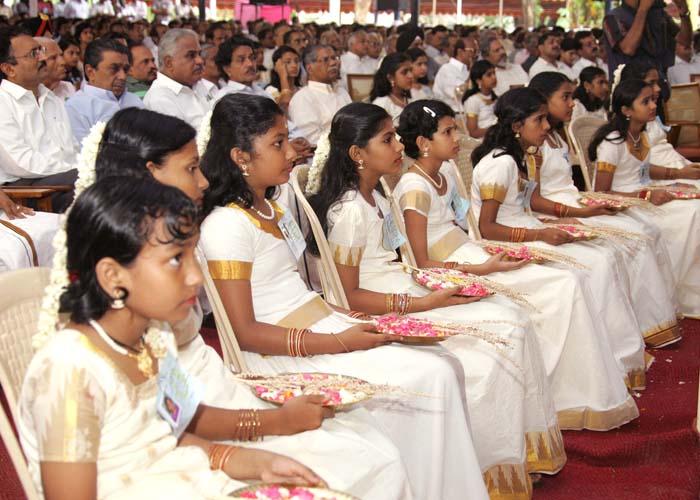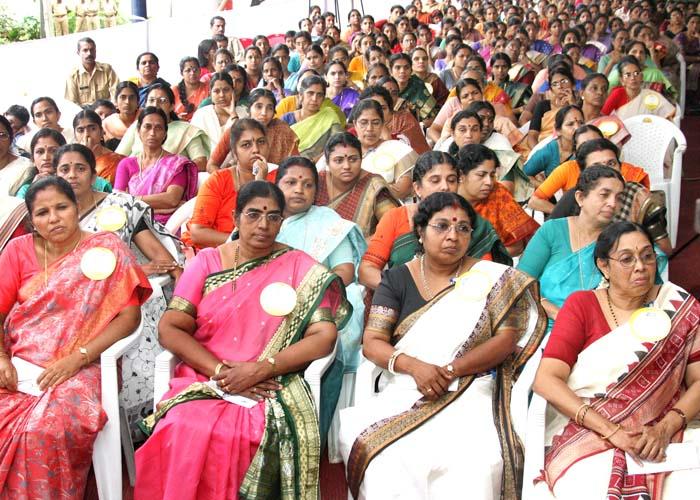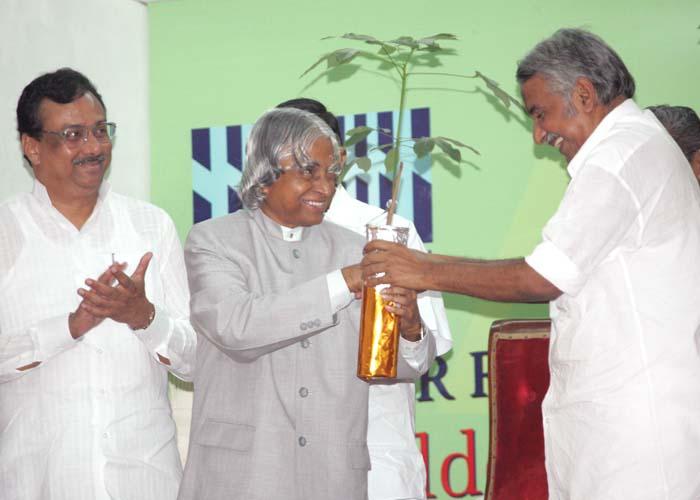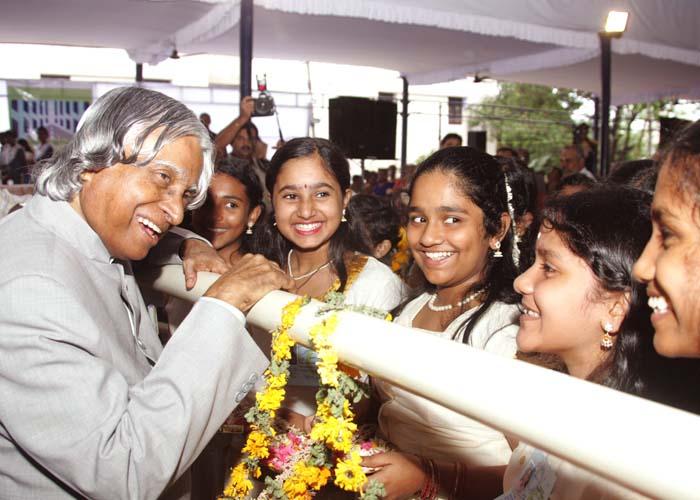Address at the Golden Jubilee Celebrations of the Rubber Research Institute of India, Puthuppalli, Kottayam
Puthuppalli, Kottayam : 29-07-2005
Missions for Rubber Cultivation
I am delighted to participate in the Golden Jubilee Celebrations of the Rubber Research Institute of India (RRII). I extend my greetings to all the members of RRII and the pioneers who have nurtured this institution from its inception during this Golden Jubilee Celebrations. I understand that during the last 50 years there has been phenomenal increase in the area under rubber cultivation and in per hectare production. The average production of rubber has risen from 300kg per hectare to 1700 kg per hectare in 2003-2004. I congratulate the members of Rubber Research Institute and their teams consisting of scientists and staff. I greet another important component of rubber production who are the people involved in rubber cultivation for their contribution in making this yield possible through consistent application of R & D in the field. On this occasion, I would like to discuss on the topic "Mission for Rubber Cultivation".
Bridging the gap between Farm and Lab productivity
Over the years the Rubber Research Institute has developed a number of clones and have recommended for experimental planting and these have performed extremely well in the farms. However, I find that there is a large gap between the yield potential and actual yields as per laboratory results realized by the planter. For example RRII 118 has the potential to give an yield of 2090 kg per hectare whereas the actual realized is only 1250. This is an area where I would like the researchers to pay attention and identify the reasons for the gap. Technology with a combination of experienced planters will provide good results. In our first green revolution seed alone did not result in high productivity of wheat but the matching of the seed to the soil, seeding at the right time, use of right type of fertilizers, water management and pre and post harvest care increased the productivity. The partnership between scientists and farmers worked. In a similar way the scientific results can be translated into multi-dimensional approach involving the scientists and rubber cultivators for realizing higher yield in the field.
In this context, I would like to give an example of increased productivity of cotton realized in one of the Punjab villages and by an industry in collaboration with agricultural research institute.
Seed Cotton productivity: Textile industry is very important for the Indian economy. The basic raw material is cotton. India is the third largest producer of cotton in the world. However, compared to the world average of 700 kgs of seed cotton per acre we produce only 350 kgs of seed cotton per acre. It is indeed a technological concern for the nation. Shri Oswal of Vardhman group, adopted the village Nava Pind in the northern region brought out a cooperative movement of the farmers, scientists, trainers and the industry and launched cultivating cotton of over 1200 acres. A training programme was launched for farmers starting with soil characterization, matching the cottonseed to soil, water and fertilizer management. They were also trained on proper application of fertilizer and pesticide during the seeding and growth process in the right season and proper irrigation techniques to enhance the productivity of cotton.
The project resulted in increasing the average seed cotton yield of the village from 450 KG per acre during the year 2002-2003 to 950 KG per acre for the year 2003-2004, that too at a considerably reduced investment.
This model can be studied by the Rubber Research Institute of India and applied in a selected rural experimental complex for training the rubber growers and facilitating them to bridge the productivity gap between 2100 kg and 1250 kg per hectare. I would also suggest that the research team consider international standards and try to be the leader in yield, productivity, efficiency and quality. This has to be a collaborative venture between the research institutions, industry, academia and the farmers. Proper marketing has to be an important component in increasing the cultivators earnings.
Tele-consultancy
RRII may be connected to other universities of excellence in rubber technology in the country and abroad and also extension centres through tele-education. The scientists of the institute should have a collaborative tele-education network for interacting with renowned scholars in various specializations pertaining to Rubber technology. Tele-education will provide knowledge connectivity and will facilitate the creation of a knowledge society, leading to enhanced wealth generation for national development. In order to bring about a vibrant educational and research atmosphere, we need to initiate research programmes in collaboration with various scientific and research institutions in the country and abroad in the core competence area of the institute. This networking will provide larger exposure to the scientists of the institute and enable them to participate in the extension programmes. Now that we have the images from number of remote sensing satellites, scientists working in rubber research should concentrate on the collection and dissemination of remotely sensed data of rubber plantation trees and advice the rubber growers for enhancing rubber productivity in different regions.
The institute in coordination with State Government and local institutions can consider extending tele-consultancy services in rubber relating to crop improvement, crop management, crop protection and processing and product development to the farmers, thereby ensuring timely dissemination of appropriate information. The Institute can suggest to the rubber growers compatible crops to be grown in the rubber farm while the rubber trees are young. This will enrich the soil and also farmers will get incremental income.
Waste Management
I understand the rubber plants have the life of thirty years. After thirty years the old plants have to be removed and new plantation has to take place. Presently, the cut plants are being used for making merely packing cases. This does not provide adequate revenue to the farmers. The Institute must carry out research on what treatment can be given to the plant which will enable realizing quality rubber plant wood which can be used for making furniture or house hold fitments and craft work. This will provide value addition to the waste and generate wealth for the rubber growers. If there is large waste generated a bio-mass powerplant can be created at various rubber plantation location.
Bio-pesticide development
Many rubber growers use chemical pesticides for plant protection. Now it is time to develop bio-pesticides as a sustainable alternative to chemical pesticides for maintaining the soil characteristics. Recently, I came across a research mission which has been taken up by International centre for Genetic Engineering and Bio-technology to isolate a bacterium from soil dwelling nematode, which is highly pathogenic to insects. Sustained research and field trials during the last two years, at various locations in the country, of the formulation consisting of bacterium has led to successful optimized formulation resulting in a viable bio-pesticide. As reported, the formulation is effective in agricultural and horticultural insect pests like diamond back moth of cabbage and cauliflower, mealy bugs of citrus fruits and grapes and termites in teak plantation. White woolly aphid of sugar cane, which is a major factor in reducing the sugar production of Maharashtra, Karnataka and Andhra Pradesh, is effectively controlled by the bio-pesticide. Its efficacy is reported to be comparable to the chemical insecticide. The RRII can study these bio-pesticides and evaluate its efficacy against pests in rubber plantation.
Integrated planning in rubber production & processing
The primary process of making natural rubber has to be be improved for promoting quality and cost competitiveness. RRII can suggest creation of industries near to their rubber farm so that the latex can be directly used by the industry instead of the rubber grower producing the intermediate sheets. RRII can work with rubber industries to evolve processes for reducing the energy cost and also the transportation cost. Such enterprises can also avail electricity generated through solar farms or bio-mass plants. The relected light of the solar panels can also provide adequate solar light for growing some other short term crops in the rubber farm. This can provide additional revenue to the rubber grower. RRII may like to investigate the possibility of such usage.
Genetic Engineering in Rubber
I have inaugurated a research laboratory called Plant Molecular and Genetic Engineering Laboratory for sugarcane research established by a sugarcane cooperative society, near Pune. One of the main missions of this laboratory is to undertake research for development of sugarcane variety with maximum sugar content consuming minimum water and yielding in the shortest period. In rubber research RRII is already working in the area of transgenic plants and other research in biotechnology particularly in the shoot tip culture. However, I believe to increase the income of rubber cultivators the most important research will be to find and establish shade tolerant crop variety that can grow in rubber plantation areas. Similarly there are many areas in which research could be carried out to increase over all productivity, processing and applications of rubber and rubber products.
Missions for Rubber Research Institute
During the last 50 years RRII has carried out excellent work in the areas of rubber research and provided inputs for making the rubber industry prosperous in Kerala. Considering the importance of this industry which is employing nearly 7 lakh people both directly and indirectly, I would suggest the following missions for the Institute:
(a) Work towards increasing the revenue of the rubber growers from the existing Rs. One lakh per hectare per year to Rs.2 lakh per hectare per year within the next three years by adopting results materialized from the research areas.
(b) Presently the country is consuming around one million tons of rubber both natural and synthetic. The aim should be to produce additional one million ton within the next decade so that India can export part of the rubber produced in the country. This will result in additional earnings and increase in employment potential.
(c) Research needs to be undertaken for establishment of technologies to enable production of rubber in non-traditional area with minimal inputs.
(d) Identify locations in which enterprises producing value added rubber can be established contiguous with the rubber farms for realizing the benefit of reduced logistic cost and processing cost.
(e) Develop a chemically modified form of natural rubber which can replace the requirement of synthetic rubber for special applications. This will reduce the atmospheric pollution created by synthetic rubber factories and also eliminate the need for importing some intermediate inputs.
(f) Organise an international conference of users of natural rubber which will assist Kerala for evolving a ten year mission of growing rubber plantation taking into account competitiveness.
Conclusion
The Government has announced a rural development programme "Bharat Nirman". The scientists and staff of RRII, have a key role to play in contributing towards the successful implementation of this programme to bring about the needed societal transformation and prosperity to our rural population. This is the time for RRII to adopt twenty villages in the Kottayam region and establish a model PURA having physical, electronic and knowledge connectivities leading to economic growth for rural areas. PURAs have to use the local core-competence of that region.
Once again let me greet all the members of the RRII on this occasion of Golden Jubilee Celebrations. My best wishes to all of you for success in your mission of making rubber industry, a wealth generator for Kerala and Kerala rubber planters.
May God bless you

